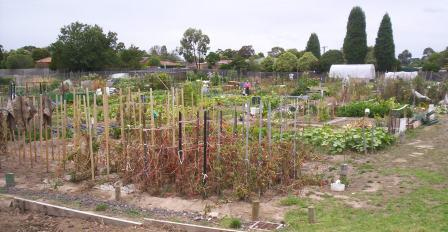By Misty Newman

Often, people believe they need a lot of space or need to live in the country to have a beautiful vegetable garden. In recent years, however, urban gardening has become a world-wide trend. According to the USDA, approximately 15 percent of the world’s food supply is now grown in urban centers. Urban gardening is a great stress reliever, an investment in your health and an activity your entire family can enjoy.
What is Urban Gardening?
Urban gardening (aka urban farming) is the process of growing plants of different varieties in an urban environment. Urban gardening includes several unique gardening concepts; planting in tiny backyard plots, a community garden in a city park or indoor hanging gardens.
You might have a restaurant grow their own herbs in an indoor garden, a neighborhood take over an empty lot and plant a raised bed garden, or a family that plants their garden in containers for their patio.
How to Get Involved with Urban Gardening
If you have never grown a garden, or you are just starting out, here are some great resources to get you started.
American Community Gardening Association – Its mission is to increase community gardening in the United States and Canada.
Urban Farm Online – An excellent resource including practical how-tos for urban farming.
25 Small Urban Garden Design Ideas – A DIY roundup of urban farming ideas.
Urban Farming Is Growing a Green Future – This is a National Geographic slideshow featuring creative community urban farming photos and descriptions of the farms.
What are the Main Benefits to Urban Gardening?
Productivity. With an urban garden, you can produce as much as 100 times the food as regular farming. Many urban farms are designed vertically, which allows more produce to be grown per square foot.
Sustainability. With urban-gardening systems, you can save a lot on water, power and space. There are systems that use about 90 percent less water and four times less space compared to traditional farming. Perhaps you think you can’t afford the cost of putting in an urban garden. For an urban farm that costs $500, you can recoup those costs within a year. The more we switch our everyday food production to urban farms, the more we decrease the development of drought, soil erosion and similar problems.
Quality of Life. There are cities where residents do not have access to high-quality, affordable fresh fruits and vegetables. A community garden can make all the difference in the world. Based on a talk from an expert in the field, it is possible to feed a city from the food grown on a rooftop farm.
Planting an Urban Garden will ultimately save you money and give you great satisfaction. Start small if you find it intimidating. In no time, you could have that garden of your dreams.
Misty Newman owns Maricopa Outdoor Adventures.
MaricopaOutdoorAdventures.com
This column appears in the March issue of InMaricopa.


















![Elena Trails releases home renderings An image of one of 56 elevation renderings submitted to Maricopa's planning department for the Elena Trails subdivison. The developer plans to construct 14 different floor plans, with four elevation styles per plan. [City of Maricopa]](https://www.inmaricopa.com/wp-content/uploads/2024/04/city-041724-elena-trails-rendering-100x70.jpg)